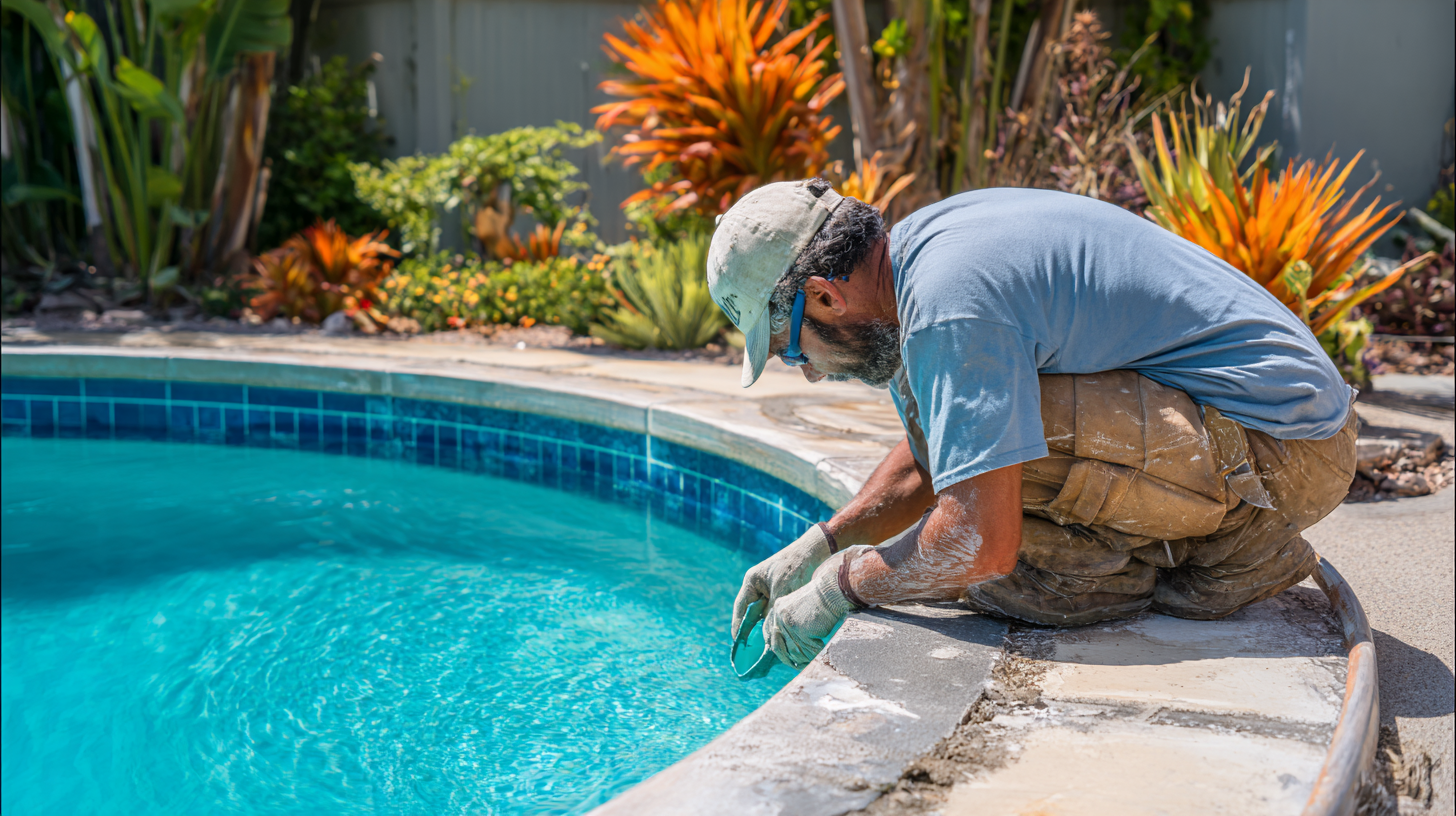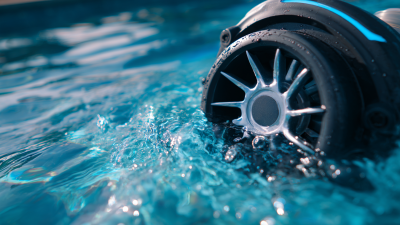Top 10 Pool Repair Service Techniques to Extend Lifespan and Enhance Safety
In the realm of maintaining a swimming pool, understanding the intricacies of repair services is crucial to extending its lifespan and enhancing safety. According to industry expert John Smith, a seasoned professional in the pool repair service sector, “Regular maintenance and timely repairs are not just about aesthetics; they're essential for ensuring the safety and longevity of every pool.” His insights shed light on the importance of adopting effective repair techniques to safeguard both the structure and the users of the pool.
As pool owners strive to create a safe and enjoyable environment, the challenges of wear and tear become increasingly apparent. Implementing the right pool repair service techniques not only addresses immediate concerns but also fosters a proactive approach to long-term maintenance. By prioritizing repairs, one can prevent more costly fixes down the line, ultimately contributing to a more robust and resilient swimming experience.
In this article, we will explore the top ten pool repair service techniques that can significantly enhance both the safety and lifespan of your pool. From addressing leaks to ensuring proper water chemistry, each technique plays a vital role in mitigating risks and promoting a healthy swimming environment. Discover these essential strategies to maximize your pool's functionality and protect your investment for years to come.

Common Signs Your Pool Needs Repair and Maintenance
When it comes to maintaining the safety and longevity of your pool, being aware of common signs that indicate the need for repair is crucial. One of the first indicators is water quality issues. If you notice unusual changes in water clarity or if the chemical balance becomes difficult to maintain, it’s a signal that deeper problems may exist, possibly involving the filtration or plumbing systems. Cracks in the pool’s surface can also be a red flag, as they can lead to further structural damage and water loss if not addressed promptly.
Additionally, unexpected increases in your water bill may suggest leaks that require immediate attention. Regular inspections can help catch these problems early, preventing costly repairs down the line. Moreover, visual signs like algae growth, which can indicate inadequate circulation or filtration, should not be ignored. Keeping an eye on these indicators ensures that your pool remains a safe and enjoyable space for all, ultimately extending its lifespan through routine care and timely repairs.
Top 10 Pool Repair Service Techniques to Extend Lifespan and Enhance Safety
This chart illustrates the effectiveness of various pool repair service techniques in extending the pool lifespan and ensuring safety. Each technique is scored based on its overall effectiveness, ease of application, and frequency of use.
Essential Tools for DIY Pool Repair Projects
When it comes to DIY pool repair projects, having the right tools at your disposal is crucial. Research indicates that a well-equipped homeowner can save upwards of 30% on professional repair costs. Key tools include a high-quality vinyl patch kit for repairing holes or tears in vinyl liners, a multi-tool for adjusting skimmers and returns, and a robotic pool cleaner for regular maintenance, which can significantly reduce wear and tear on pool surfaces. These tools not only extend the lifespan of your pool but also enhance its safety, reducing the risk of injury from cracks or slippery surfaces.
Moreover, the importance of investing in maintenance tools cannot be understated. According to industry reports, over 40% of pool-related accidents result from poorly maintained surfaces. Essential items like a durable pole skimmer and a reliable vacuum can help maintain proper water chemistry and clean debris, thus preventing algae growth and the associated risks. Additionally, pressure testing kits can help identify leaks early on, ensuring that your pool remains in top condition and safe for use. By prioritizing the right tools and routine maintenance practices, pool owners can effectively manage repairs and extensions, securing both safety and enjoyment for years to come.
Step-by-Step Guide to Fixing Common Pool Leaks
When tackling common pool leaks, identifying the source of the leak is the first critical step. This often involves visually inspecting the pool for any visible cracks, gaps, or signs of wear. Pay special attention to areas around fittings, skimmers, and the pool structure itself. If the leak isn't apparent, you can perform a bucket test. By placing a bucket filled with water on the pool steps, observing the water levels after 24 hours can help determine if your pool is leaking or if it's simply evaporation.
Once the leak has been pinpointed, the repair process can begin. For small cracks, a quality epoxy or pool-grade sealant can be applied directly to the affected area. For larger leaks or structural issues, you may need to drain the pool partially and apply concrete patching or even re-tile the area. It's crucial to ensure a proper seal to prevent future issues. Regular maintenance checks are also advisable to catch potential leaks early before they escalate into more significant problems. By following these step-by-step techniques, you can extend the lifespan of your pool while enhancing safety for all users.

Safety Precautions to Take When Repairing Your Pool
When undertaking pool repairs, safety should be the foremost concern. According to the Consumer Product Safety Commission, over 3,500 pool-related injuries occur annually, underscoring the necessity of adhering to strict safety measures. Before beginning any repair work, it's essential to turn off the pool's electrical systems to prevent electric shock. The National Association of Pool Builders recommends using non-conductive tools when dealing with any electrical components of the pool. Proper personal protective equipment (PPE) such as gloves and goggles can significantly reduce the risk of injuries from sharp objects or hazardous chemicals.
Additionally, ensuring that the pool area is free of unnecessary clutter can prevent accidents during repairs. The CDC emphasizes the importance of having a designated work zone, which should be well-lit and marked. Keeping children and pets away from the work area is crucial, as distractions can lead to unfortunate incidents. Moreover, adhering to manufacturer guidelines when using chemicals for repairs is essential. If handled improperly, pool chemicals can be dangerous; a report from the American Chemical Society notes that improper handling can lead to serious injuries or even fatalities. By taking these precautions, pool owners can significantly reduce risks and ensure a safe repair process.
Tips for Regular Pool Maintenance to Prevent Major Repairs
 Regular pool maintenance is essential for preventing major repairs and ensuring a safe swimming environment. In Canberra, where the summer heat can be intense, homeowners can significantly extend their pool's lifespan by adhering to a consistent maintenance schedule. This includes routine tasks such as checking and balancing water chemistry, cleaning the filter, and removing debris from the pool surface. Proper circulation of water not only keeps the pool clean but also helps to prevent algae growth and other harmful organisms.
Regular pool maintenance is essential for preventing major repairs and ensuring a safe swimming environment. In Canberra, where the summer heat can be intense, homeowners can significantly extend their pool's lifespan by adhering to a consistent maintenance schedule. This includes routine tasks such as checking and balancing water chemistry, cleaning the filter, and removing debris from the pool surface. Proper circulation of water not only keeps the pool clean but also helps to prevent algae growth and other harmful organisms.
In addition to these regular maintenance tasks, inspecting the pool for any signs of wear and tear is crucial. Regularly checking the pool liner for leaks, ensuring tiles are intact, and surveying the pool deck for cracks can help catch minor issues before they escalate into costly repairs. By taking these preventative measures, pool owners can enjoy a safe and pristine swimming experience throughout the summer, ultimately leading to fewer repairs and a more enjoyable season.
Related Posts
-

Why You Need Professional Swimming Pool Service for Optimal Maintenance and Enjoyment
-

Maximizing Efficiency with a Comprehensive Guide to Service Pool Management
-

Discover the Benefits of a Service Pool for Your Business Efficiency
-

The Ultimate Guide to Choosing the Best Swimming Pool for Your Home
-

The Benefits of Using Public Pools for Community Health and Wellness
-

Exploring the Essential Role of Pool Motors in Maintaining Crystal-Clear Swimming Pools
